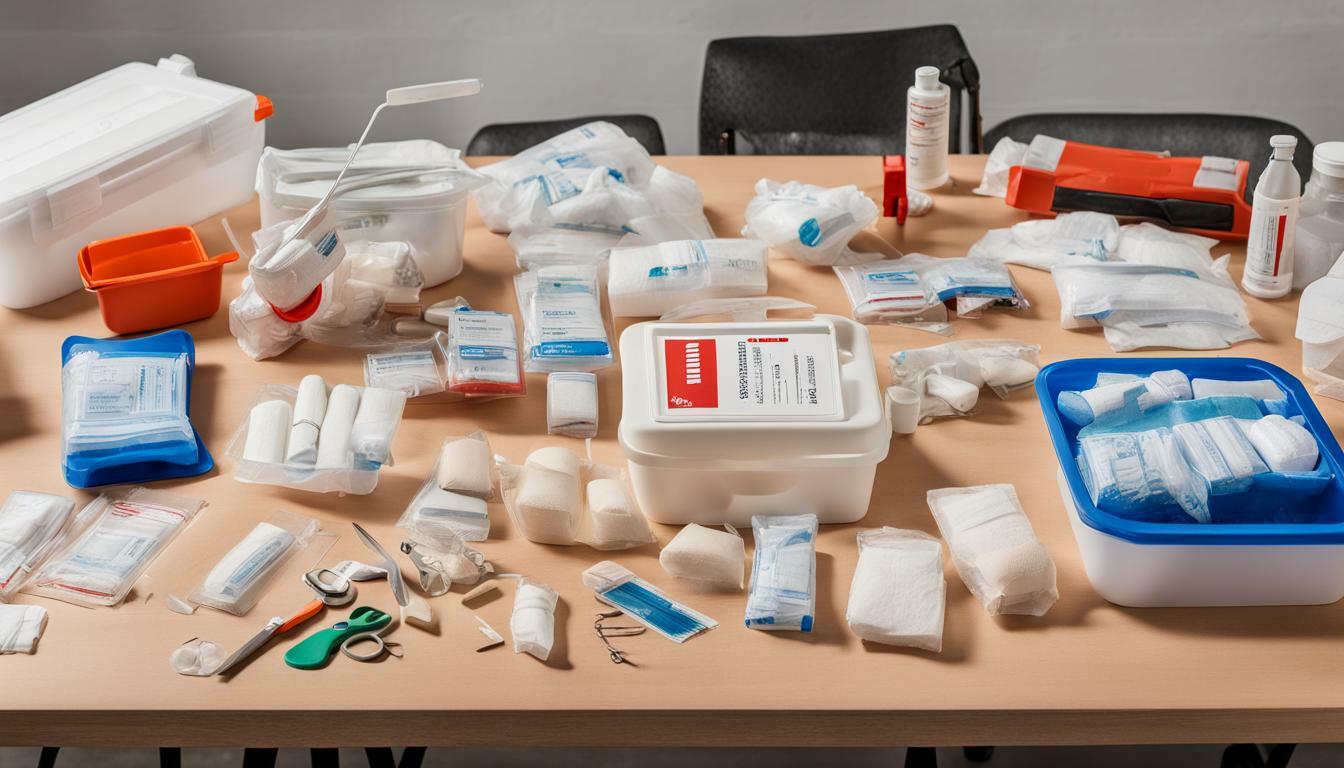Engaging in DIY projects can bring a sense of accomplishment and satisfaction, but it’s crucial to prioritize safety to avoid accidents and injuries. As a DIY enthusiast, you should always be prepared for the unexpected by having a well-equipped first aid kit. With the right supplies and knowledge, you’ll be able to manage accidents effectively and minimize their potential impact.
DIY projects can result in a variety of accidents, such as cuts, burns, and falls. A first aid kit designed for DIY enthusiasts should include essentials like adhesive bandages, antiseptic wipes, burn ointment, sterile gauze pads, tweezers, and scissors. Properly managing minor injuries can make a significant difference in preventing further harm and promoting faster healing.
Additionally, adopting safety measures when engaging in DIY projects can significantly reduce the risk of accidents. This includes wearing appropriate protective gear, using tools and equipment correctly, and working in a well-ventilated space. Prioritizing safety over speed or convenience is key to enjoying your DIY projects without the fear of harm.
In this article, we’ll discuss the essential first aid supplies needed for DIY enthusiasts, safety tips for DIY projects, and the importance of emergency preparedness. We’ll also provide a checklist for a DIY first aid kit and offer step-by-step guidelines on how to respond to common DIY accidents. Let’s get started!
Key Takeaways
- DIY enthusiasts should prioritize safety and have a well-equipped first aid kit.
- Common DIY accidents include cuts, burns, and falls, but they can be managed effectively with the right supplies and knowledge.
- Safety measures such as wearing protective gear and working in a well-ventilated space can reduce the risk of accidents.
- Emergency preparedness is crucial in case of unexpected accidents.
Why First Aid Kits are Essential for DIY Enthusiasts
Engaging in DIY projects can be a fun and rewarding way to spend your time, but it can also come with its fair share of risks. From cuts and burns to falls and sprains, accidents can happen at any time, and it’s essential to be prepared. That’s where having a well-stocked first aid kit comes in.
A first aid kit is a collection of supplies and equipment that are used to provide immediate care for injuries and illnesses. For DIY enthusiasts, having a first aid kit on hand can help you manage accidents effectively and minimize the severity of injuries.
Some common accidents that can occur during DIY projects include cuts from sharp tools, burns from heated materials, and falls from ladders or other elevated surfaces. While some injuries may be minor, others can be severe and require immediate attention. With a first aid kit, you’ll be able to respond quickly and provide initial care while waiting for medical help, if necessary.
Furthermore, having a first aid kit readily available can also help with DIY injury prevention. Often, minor injuries can be treated on the spot, preventing them from getting worse and causing more significant problems in the future.
Overall, a well-equipped first aid kit is an essential item for any DIY enthusiast. By being prepared and proactive, you’ll be able to enjoy your projects safely and with peace of mind.

First Aid Essentials for DIY Enthusiasts
Accidents can happen anytime, anywhere. For DIY enthusiasts, having a well-equipped first aid kit is essential in dealing with injuries while working on home projects. Here are some of the most important First Aid essentials that should be included in a first aid kit for DIY enthusiasts:
| First Aid Supplies | Use and Importance |
|---|---|
| Adhesive bandages | Used to cover small cuts and wounds, preventing infection and promoting healing. |
| Antiseptic wipes | Used to sterilize the skin around wounds and to prevent infection. |
| Burn ointment | Used to soothe and treat minor burns caused by hot surfaces or flames. |
| Sterile gauze pads | Used to control bleeding and protect wounds from further damage. |
| Tweezers | Used to remove splinters or debris from wounds. |
| Scissors | Used to cut gauze pads or tape to the appropriate size to cover or dress wounds. |
Make sure to keep these First Aid essentials in your kit, which will help you deal with minor injuries that may occur during your DIY projects.
It’s important to note that the contents of a first aid kit may vary depending on the type of DIY project you’re working on. For instance, if you’re working on a woodwork project, you may want to include a pair of protective gloves and eye goggles to prevent sawdust and wood chips from getting into your eyes and skin.
Always remember to replenish your first aid kit regularly to ensure that all supplies are up to date and not expired.
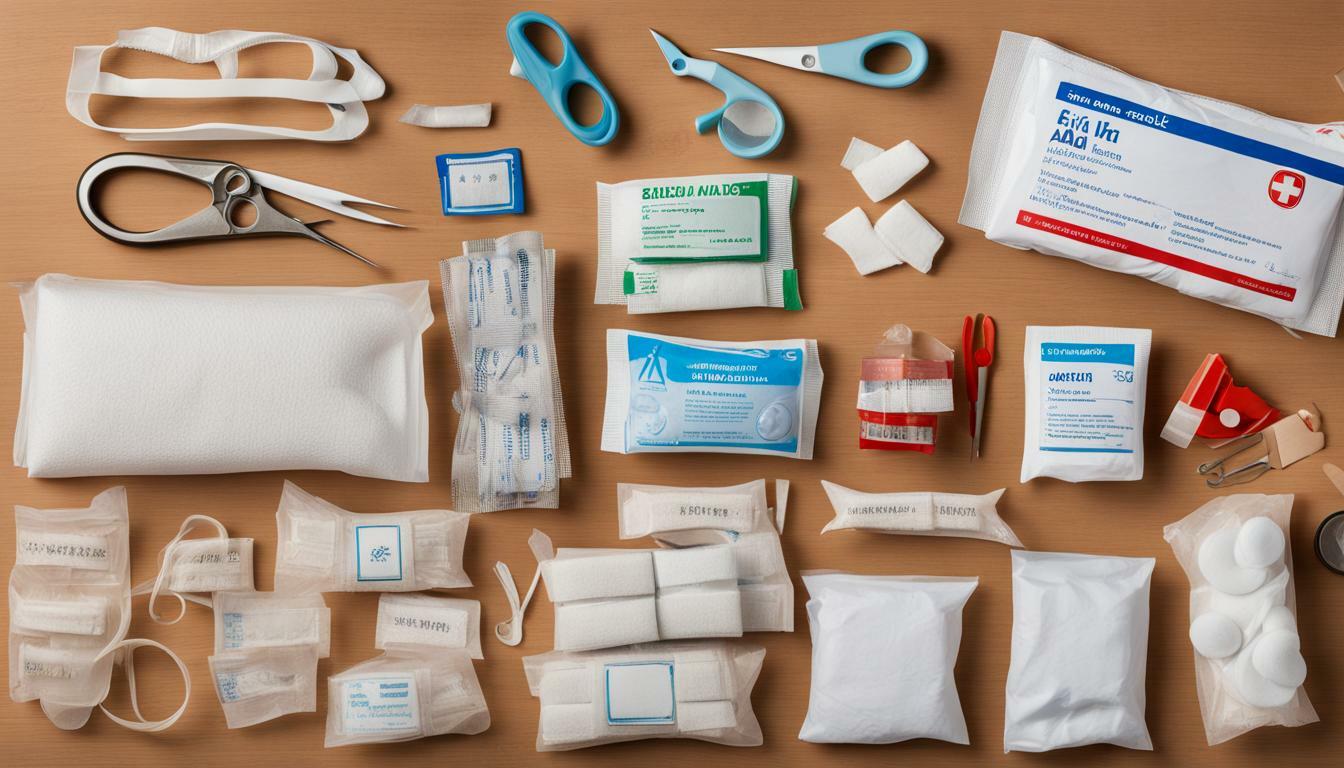
Safety Tips for DIY Projects
Engaging in DIY projects can be a fun and rewarding experience, but it is important to prioritize safety to prevent injuries. Here are some essential safety tips to keep in mind:
- Always wear appropriate protective gear, including safety glasses, gloves, and sturdy shoes.
- Use tools and equipment correctly, and follow manufacturer instructions carefully.
- Work in a well-ventilated area to prevent exposure to harmful fumes or dust.
- Keep the workspace clean and organized to prevent tripping hazards and to ensure tools are easily accessible.
- Avoid distractions while working on a project and stay focused on the task at hand.
- Work within your skill level and ask for assistance if needed.
By following these safety tips, you can minimize the risk of accidents and injuries while working on your DIY projects. Remember, safety should always come first!

DIY Emergency Preparedness
DIY projects are a fun way to unleash your creativity and upgrade your home. However, accidents can happen unexpectedly, and it’s important to be prepared for any emergency. As a DIY enthusiast, creating a well-stocked first aid kit is essential. Here’s a checklist of additional items to include in your kit to ensure DIY emergency preparedness:
- Flashlight – Essential during power outages or if you need to work in low light environments.
- Emergency blanket – Useful for keeping warm during an emergency or to cover a surface before working on it.
- Whistle – Can be used to call for help in case of an accident or an emergency.
It’s important to store your first aid kit in an easily accessible location, keeping in mind that accidents can happen anywhere in your home or garden. Also, make sure to check your kit regularly, replacing expired items to ensure that it’s fully stocked and ready to use.
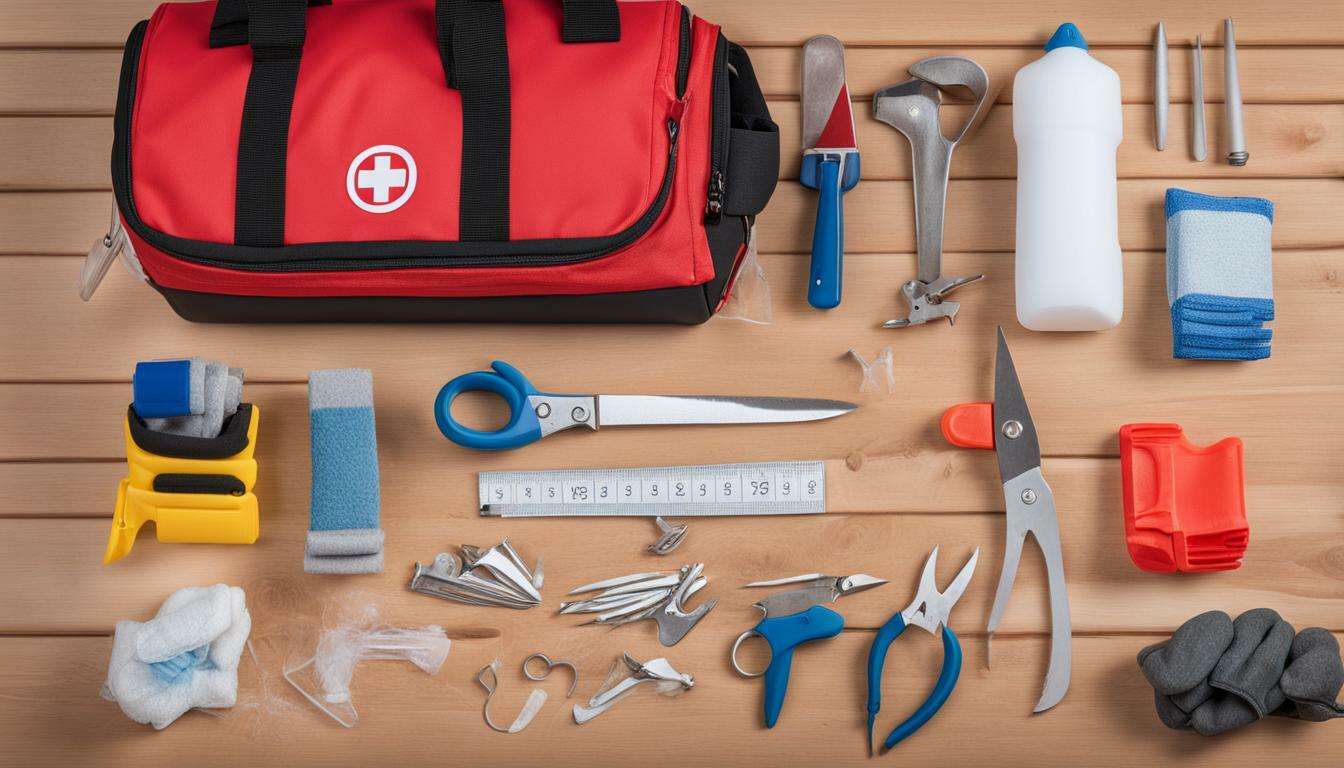
Take the necessary precautions and prepare ahead of time to ensure that you’re ready to handle any unexpected emergencies that may arise during your DIY projects.
Dealing with DIY Accidents
Accidents can happen to anyone during DIY projects, no matter how cautious you are. That’s why it’s essential to be prepared and know how to respond to common DIY accidents. Here are step-by-step guidelines on how to manage three common DIY accidents: cuts, burns, and falls.
Cuts
If you or someone else gets a cut during a DIY project, follow these steps:
- Apply pressure with a clean cloth or bandage to stop the bleeding.
- Clean the wound thoroughly with soap and water.
- Apply an antibiotic ointment and cover with a sterile gauze pad.
- If the cut is deep or won’t stop bleeding, seek medical attention.
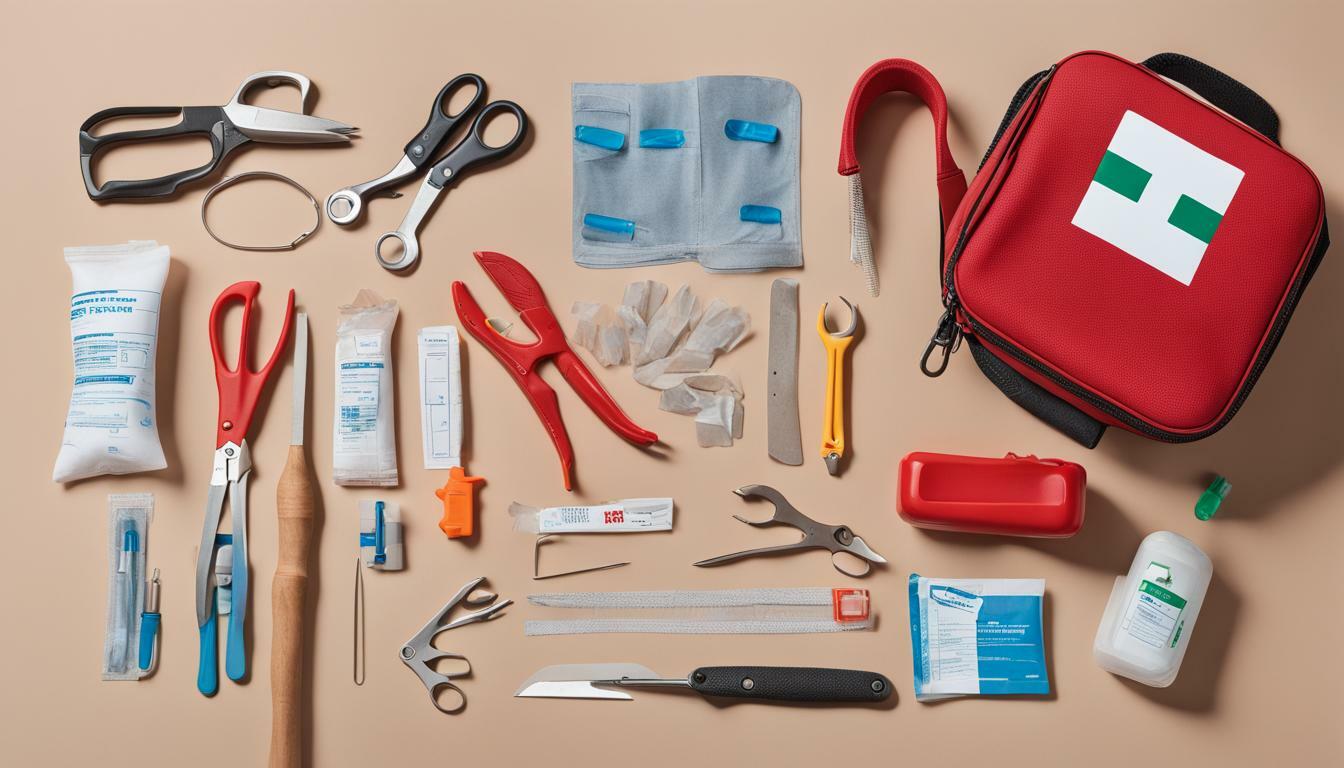
Burns
Burns can occur when handling hot objects or working with chemicals. If you or someone else gets a burn, here’s what to do:
- Remove any clothing or jewelry from the affected area.
- Cool the burn under running water for at least 10 minutes.
- Cover the burn with a clean, damp cloth or sterile gauze pad.
- If the burn is severe or covers a large area, seek medical attention.
Falls
Unstable ladders, uneven surfaces, or slippery floors can cause falls during DIY projects. If someone falls, follow these steps:
- Assess the situation and call for medical assistance if necessary.
- If the person is unconscious, check their breathing and pulse.
- If the person is conscious, help them into a comfortable position and apply ice to any swollen areas.
- If the fall results in a sprain or fracture, immobilize the affected area and seek medical attention.
Remember, when in doubt, seek medical attention. And don’t forget to replenish your first aid kit regularly to ensure it’s always fully equipped.
Maintaining and Replenishing Your First Aid Kit
It is crucial to regularly check and replenish your first aid kit to ensure that you have all the necessary supplies in case of an emergency. Certain items, such as adhesive bandages and antiseptic solutions, have expiration dates, and it is important to replace them before they expire.
Here is a checklist of First Aid essentials that you should consider having in your kit for home DIY projects:
| Item | Quantity |
|---|---|
| Adhesive bandages | Two boxes of different sizes |
| Sterile gauze pads | Two to three boxes of different sizes |
| Antiseptic wipes | One box |
| Burn ointment | One tube |
| Scissors | One pair |
| Tweezers | One pair |
Remember to keep your first aid kit organized and easily accessible. Ensure that everyone in your household knows where it is located and how to use it.
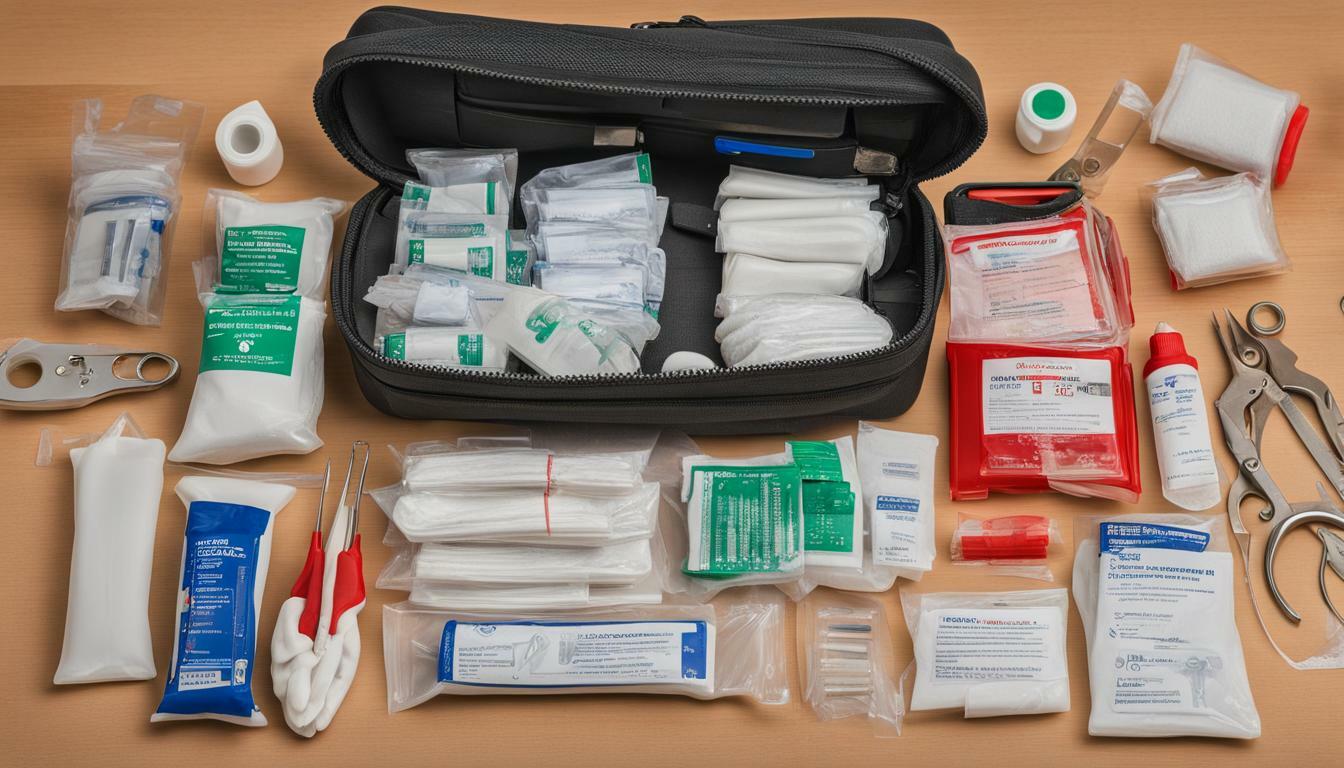
By maintaining and replenishing your first aid kit, you can be sure that you are prepared to handle minor injuries and accidents that may occur during DIY projects.
Seeking Professional Help and Training
While a well-equipped first aid kit can help DIY enthusiasts manage minor injuries, it’s important to seek professional help in certain situations. Accidents such as electrical shocks or eye injuries require immediate medical attention, and delaying treatment can have serious consequences. If you’re unsure about the severity of an injury or how to best manage it, seek help from a medical professional.
Consider taking a first aid or CPR training course to enhance your knowledge and skills in dealing with accidents. These courses can provide valuable information and hands-on practice in responding to various emergency situations. Look for local resources or organizations that offer such training, and make it a priority to attend.
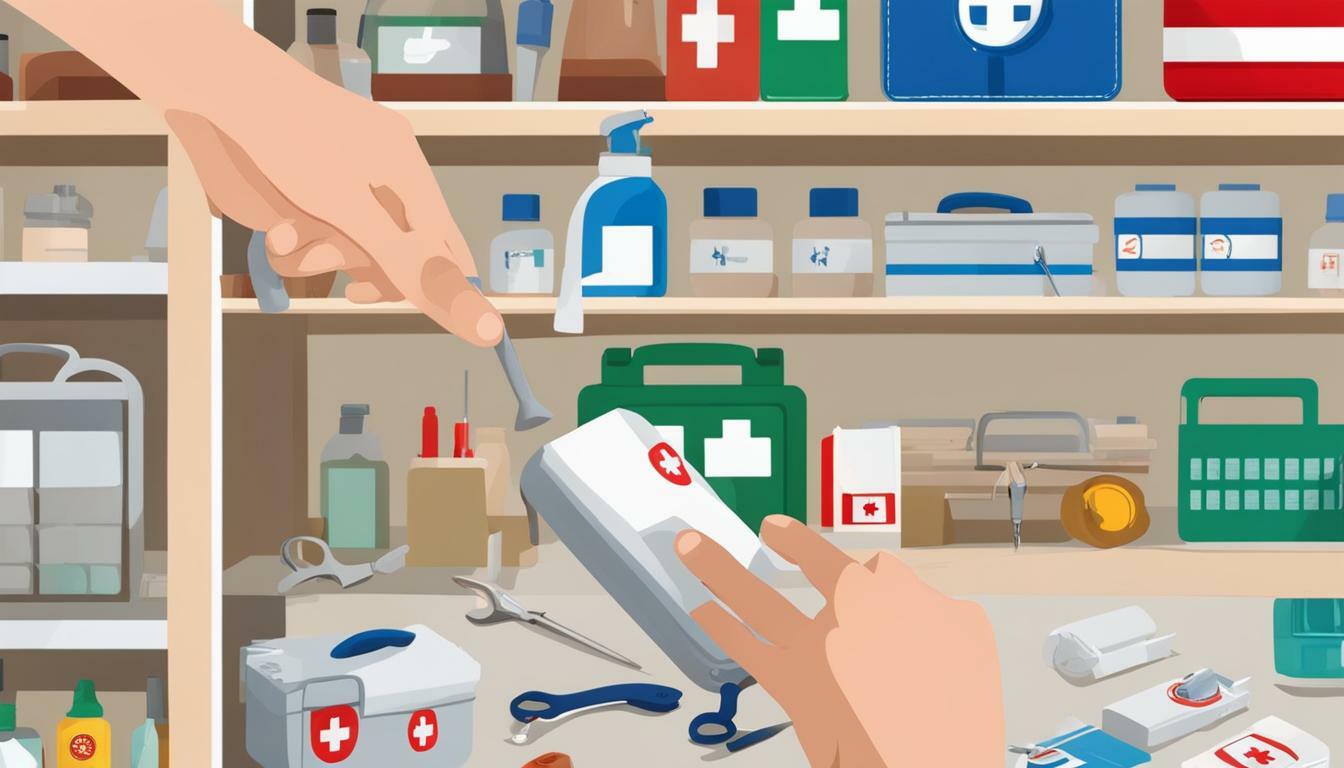
Remember, prevention is always better than cure. Prioritize safety in all your DIY projects by following manufacturer instructions, using quality materials and tools, and working within your skill level. Keep your workspace clean and organized, and wear appropriate protective gear. Being prepared with a well-equipped first aid kit and knowing how to respond to accidents can give you peace of mind and allow you to enjoy your DIY projects safely and responsibly.
Creating a Safe DIY Environment
Engaging in DIY projects can be a fun and rewarding way to improve your home or workspace. However, accidents can happen if proper safety precautions are not taken. By creating a safe DIY environment, you can minimize the risk of injuries and ensure a successful project.
Safety Tips for DIY Projects
One of the most important aspects of creating a safe DIY environment is following safety tips for DIY projects. Here are some tips to keep in mind:
- Wear appropriate protective gear, such as safety glasses and gloves, to protect against flying debris and potential hazards
- Use tools and equipment correctly, following the manufacturer’s instructions and recommended safety precautions
- Work in a well-ventilated area to avoid inhaling fumes or dust
- Keep the workspace clean and organized to minimize the risk of tripping or falling
By prioritizing these safety tips, you can reduce the risk of accidents and ensure a safe DIY project.
DIY Injury Prevention
In addition to following safety tips, there are several measures you can take to prevent DIY injuries:
- Work within your skill level, and do not attempt projects that are beyond your experience or physical abilities
- Ask for assistance when needed, especially for heavy lifting or complex projects
- Use quality materials and tools to ensure stability and durability
- Take breaks frequently to avoid fatigue or exhaustion, which can increase the risk of accidents
By prioritizing injury prevention measures, you can ensure a successful DIY project without sacrificing your safety.
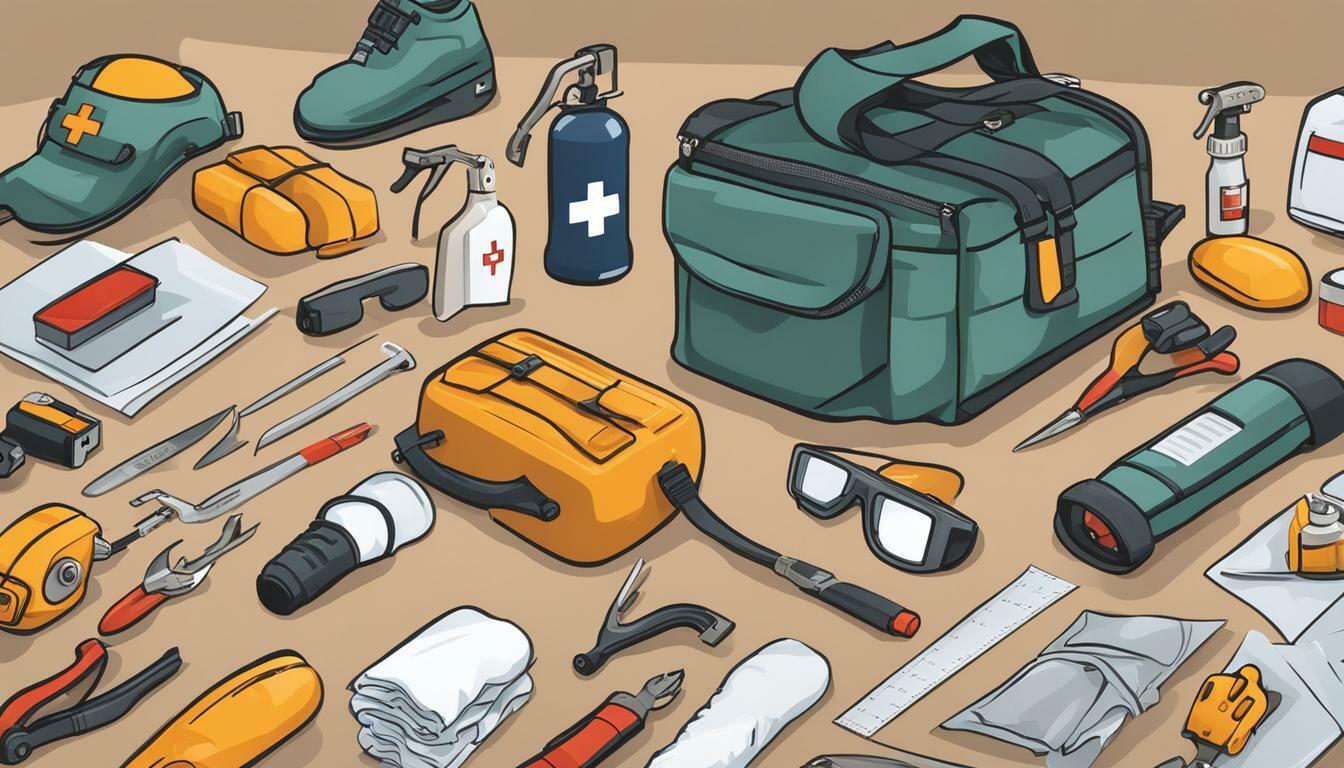
DIY Accident Management
Despite taking all necessary precautions, accidents can still happen during DIY projects. If an accident happens, it is important to respond quickly and effectively:
- Stop the source of bleeding by applying pressure to the wound with a clean cloth or gauze pad
- Treat burns by running cool water over the affected area for at least 10-15 minutes, or until the pain subsides
- Immobilize sprains or fractures by using a splint or wrap to hold the affected area in place
- Seek medical attention for severe injuries, or if you are unsure about the severity of the injury
By knowing how to respond to common DIY accidents, you can minimize the severity of injuries and ensure effective DIY accident management.
DIY Emergency Preparedness
In addition to creating a safe DIY environment and practicing injury prevention measures, it is important to be prepared for emergencies that can occur during DIY projects. By including emergency supplies in your first aid kit, such as a flashlight, emergency blanket, and whistle, you can be prepared for unexpected situations.
By prioritizing DIY accident management, safety tips for DIY projects, and DIY injury prevention, you can create a safe and successful DIY environment. Remember to always prioritize your safety and the safety of those around you.
Conclusion
As DIY enthusiasts, it’s important to prioritize safety while engaging in your projects. Accidents can happen, and having a well-equipped first aid kit can make all the difference in managing injuries effectively. Remember to regularly check and replenish your supplies, and seek professional help when necessary.
But prevention is always better than cure. Follow safety tips such as wearing proper protective gear and working in a well-ventilated area. Work within your skill level and ask for assistance when needed. Prioritize safety over speed or convenience, and always create a safe DIY environment by using quality tools and materials.
Consider taking a first aid or CPR training course to enhance your knowledge and skills in dealing with accidents. With the right tools, preparation, and knowledge, you can enjoy your DIY projects responsibly and with peace of mind.
